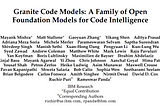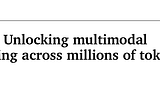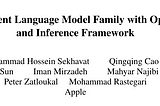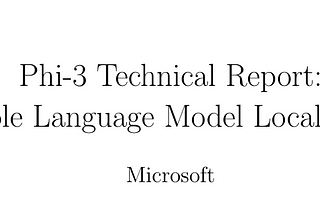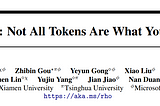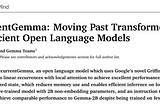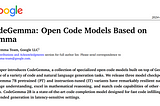Oct 15, 2024
127 stories
11 saves
A large language model trained with reinforcement learning to think before answering, producing a long internal chain of thought before responding.
Applies the minitron approach to Llama 3.1 8B and Mistral-Nemo 12B, additionally applies teacher correction to align with the new data distribution.
Neutrally generalist instruct and tool use models, created by fine-tuning Llama 3.1 models with strong reasoning and creative abilities, and are designed to follow prompts neutrally without moral judgment or personal opinions.
A suite of pre-trained models designed for code optimization tasks, built upon Code Llama, with two sizes (7B and 13B), trained on LLVM-IR and assembly code to optimize compiler intermediate representations, assemble/disassemble, and achieve high accuracy in optimizing code size and disassembling from x86_64 and ARM assembly back into LLVM-IR.
Two foundation language models, AFM-on-device (a ~3 B parameter model) and AFM-server (a larger server-based model), designed to power Apple Intelligence features efficiently, accurately, and responsibly, with a focus on Responsible AI principles that prioritize user empowerment, representation, design care, and privacy protection.
Prunes an existing Nemotron model and re-trains it with a fraction of the original training data, achieving compression factors of 2-4×, compute cost savings of up to 40×, and improved performance on various language modeling tasks.
Additional experiments of adding multimodal capabilities to Llama3.
A family of multilingual language models ranging from 8B to 405B parameters, trained on a massive dataset of 15T tokens and achieving comparable performance to leading models like GPT-4 on various tasks.
A family of small models with 135M, 360M, and 1.7B parameters, utilizes Grouped-Query Attention (GQA), embedding tying, and a context length of 2048 tokens, trained on a new open source high-quality dataset.
A fine tuned Mistral-7B through Generative Teaching via synthetic data generated through the proposed AgentInstruct framework, which generates both the prompts and responses, using only raw data sources like text documents and code files as seeds.
Utilizes interleaving local-global attentions and group-query attention, trained with knowledge distillation instead of next token prediction to achieve competitive performance comparable with larger models.
A 15B multilingual language model trained on 8T text tokens by Nvidia.
A family of multilingual language models supporting 23 languages, designed to balance breadth and depth by allocating more capacity to fewer languages during pre-training.
A family of code models ranging from 3B to 34B trained on 3.5-4.5T tokens of code written in 116 programming languages.
A more lightweight variant of the Gemini 1.5 pro, designed for efficiency with minimal regression in quality, making it suitable for applications where compute resources are limited.
A fully open language model designed to enhance accuracy while using fewer parameters and pre-training tokens. Utilizes a layer-wise scaling strategy to allocate smaller dimensions in early layers, expanding in later layers.
A series of language models trained on heavily filtered web and synthetic data set, achieving performance comparable to much larger models like Mixtral 8x7B and GPT-3.5.
Introduces Selective Language Modelling that optimizes the loss only on tokens that align with a desired distribution, utilizing a reference model to score and select tokens.
Based on Griffin, uses a combination of linear recurrences and local attention instead of global attention to model long sequences efficiently.
Open code models based on Gemma models by further training on over 500 billion tokens of primarily code
























